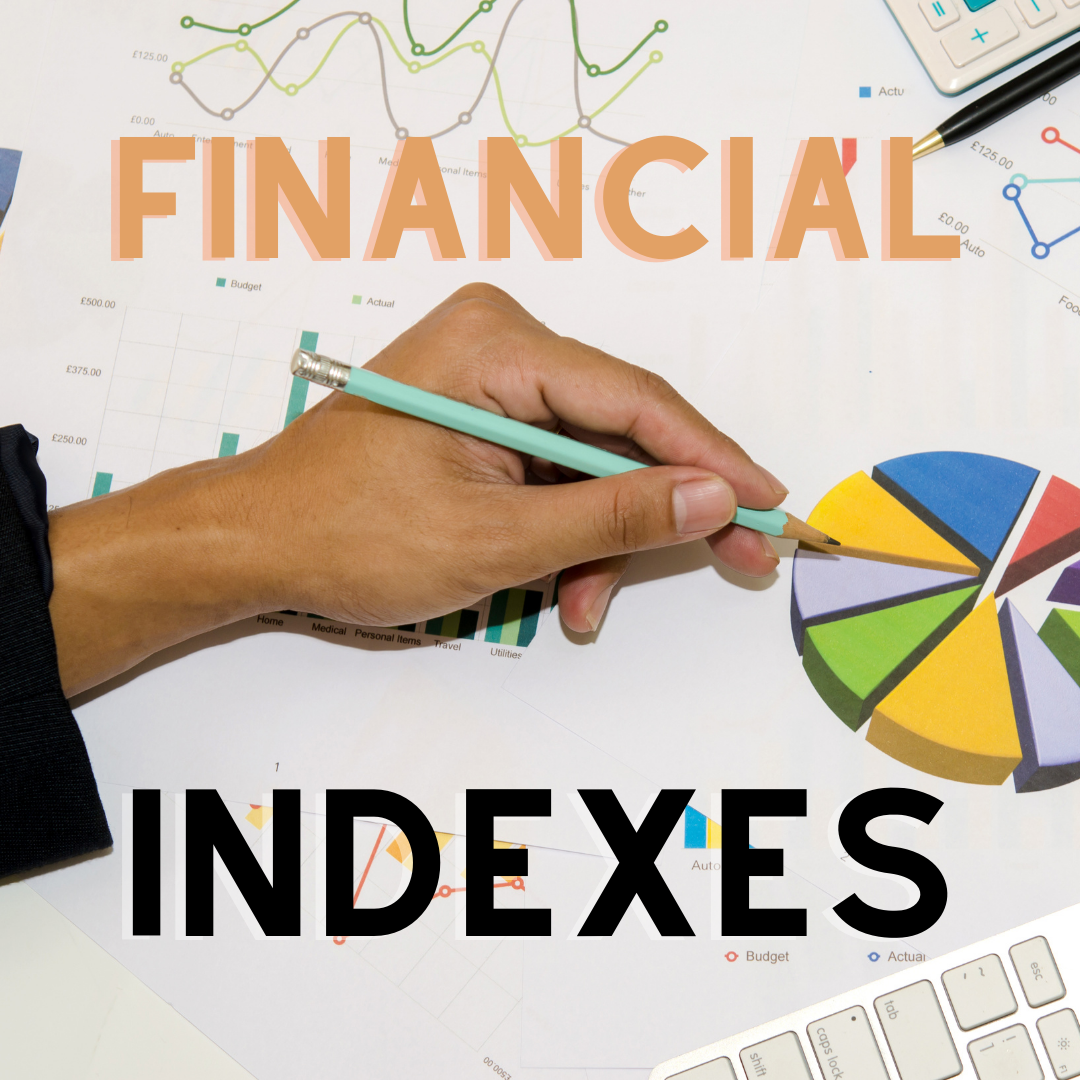When it comes to investments, financial advisors talk a lot about indexes. We’ve probably all at least HEARD of the Dow, the S&P 500, and the NASDAQ, but what are these indexes and how in the world do they pertain to me? Let’s unpack it!
What is a Financial Index?
Your portfolio is up 7%. That’s good news, right? Maybe. 7% seems like a great return, but if other portfolios that own similar investments to yours are up 10%, then 7% doesn’t look so great. The same is true of declines. If your portfolio is down 3%, that seems bad… but if similar portfolios are down 5%, then that’s actually pretty good! In order to figure out if the investments in your portfolio are performing as they should, financial professionals have to use a “benchmark”.
Rather than choose one specific investment to benchmark against, it’s usually better to benchmark against the AVERAGE of a bunch of similar investments. That’s where financial indexes come in.
Understanding the Most Common Financial Indexes
The Dow Jones Industrial Average
The Dow Jones Industrial Average (aka “The Dow”) represents 30 large, well-established companies across various industries. The Dow is often used as a benchmark for the overall health of the stock market. If you want to get a sense of how the big players in the market are doing, keep an eye on the Dow.
The S&P 500
The S&P 500 is a broader measure of the overall stock market. It includes 500 of the largest publicly traded companies in the United States covering a wide range of industries. The S&P 500 is often considered a more reliable indicator of the overall performance of the stock market compared to the Dow because it includes a larger number of companies.
The NASDAQ
The NASDAQ is the tech index. It includes over 3,000 stocks, and it’s heavily focused on companies like Apple, Amazon, Microsoft and Google. So if you want to get a sense of how the tech companies in the U.S. are doing, the NASDAQ is where you’ll want to look.
Benchmarking Your Portfolio to an Index
If you’re working with a financial advisor, it is likely that your portfolio consists of MANY different types of investments. You may have some international stock, some small companies, some medium sized companies, tech stocks, financial stocks, etc. You may also have some bonds (which perform very differently than stocks).
Unless your portfolio is 100% in U.S. stocks, you can’t fairly “benchmark” your portfolio to any single index. Remember that the stock market probably only represents the portion of your overall portfolio that’s invested in large U.S. companies.
There are MANY other indexes for benchmarking the rest of your portfolio, but they aren’t talked about as much. The Russell 2000 represents 2,000 small U.S. companies. The FTSE 100 is an index that represents the 100 largest companies on the London Stock Exchange. The Nikkei 225 represents 225 of the largest publicly traded companies in Japan. The list goes on.
There are indexes for the bond market too. The Bloomberg Barclays US Aggregate represents the U.S. “investment grade” bond market. ICE BofA Merrill Lynch US High Yield Index (that’s a mouthful!) measures the performance of “junk” bonds.
These are just a FEW of the many many financial indexes that investors use to figure out whether their own portfolios are measuring up. There are many more that cover different regions, sectors, and market segments. Each index provides insights into specific markets and can be used as a reference point for understanding trends.
If you want to know what indexes you should be paying attention to, ask your financial advisor for help.
Disclosures:
Investing involves risk. As a general rule you should only trade in financial products that you are familiar with and understand the risks associated with them. Impact Wealth Management LLC is a fee-only Registered Investment Advisor (RIA). We are based in beautiful Sioux Falls, SD and regulated by the State of South Dakota. Throughout this site, we went out of our way to present unbiased data believed to be from reliable and respected sources. However, its accuracy, completeness, and relevance are not guaranteed, and no responsibility is assumed for errors or omissions.

